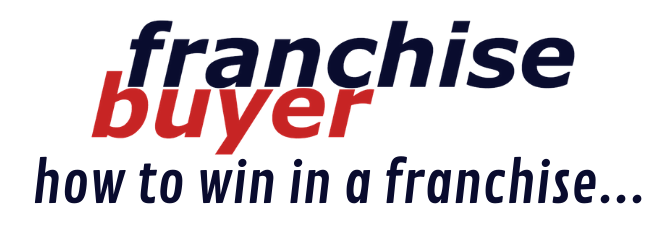July 06, 2016
Almost Every Franchisee Is Leaving Money on the Table
As a marketing advisor, one of my greatest frustrations is seeing businesses failing to collect the name and contact details of their customers. In my world of direct response marketing, this is the worst “cardinal sin” there is.
We all know that apparently it is seven times more expensive to attract a new customer than it is to sell to an existing one. Yet, despite this, more than 90% of all franchisees don’t collect customer data or, for that matter, contact details of “enquirers”.
The amount of money being left on the table by franchisees (and ultimately that means “franchisors”) would be a staggering number if someone did the figures. Frankly, I cannot understand why any business owner would not subscribe to the “know your customer” mantra — it just makes sense.
All you have to do is look at the Amazon model to see the benefits of knowing as much as possible about your customers. If you have bought a book online from Amazon, I bet, within 24 hours of the purchase, you have received emails suggesting “that if you liked that book, you will probably enjoy any of these three titles”.
Amazon understands the enormous value of collecting and categorising customer data, so that they can offer customers “like products” based on customer behaviour.

My “Client attraction formula” Starts with data Collection.
As a marketing coach to lots of businesses, I provide owners or management with my proven client attraction system that I have named The Wheel Of Wow. My company is The Institute Of Wow, and we specialise in providing businesses with a “direct-response marketing recipe” that is designed to take their clients’ eyes off the price. McDonald’s has been very good at this for decades, putting a “free toy” in their Happy Meal boxes, so that the focus is taken off the price and onto the “free toy”.
I teach businesses how to do this, and my The Wheel Of Wow system consists of five components:
- Identify your most profitable customer, so that you can look for more people who look like them. Also religiously collect customer data, so that you can market directly to them.
- Create a “wow factor” to take their eyes off the price.
- Exploit the problem/solution scenario (provide a simple solution to their challenges).
- Fix your website and turn it into a 24/7 sales juggernaut rather than an information centre, which most are.
- Stimulate repetitive trade usually by implementing some form of loyalty reward system.
Now, note that the No.1 component of my system involves “collecting client data”, so that you can market to these customers directly.

Hardly Anyone Collects Such Data
You can walk into any fast-food chain today, and they won’t care who you are. Some will give you a numbered receipt and ask you to wait a couple of minutes for your food.
Why on earth wouldn’t they give you a pencil and invite you to complete a “sweepstakes entry form”? Or why wouldn’t they have a certain “contest keyword” vividly displayed in-store and invite you to SMS that keyword with your contact details to a number to be in a sweepstakes draw?
Go to Bunnings, Woolworths, David Jones, Dick Smith or any other retailer today, and I bet you will never be asked for your name, email address or mobile phone number. Have you ever been asked for your contact details at ANY restaurant? In fact, go to just about any “franchised business” today, and I bet you will never be asked for contact details. The two major football codes recently had their Grand Finals, with 80,000 at one and 100,000 people at the other.
Guess what — neither code has a clue of who actually attended the game. Can you imagine the amount of caps, T-shirts and other licensed merchandise they could market to these people if they knew their contact details. Sure, the ticketing agencies might have the details but not the sporting codes.
Mobile Numbers are Very Important
If this article inspires you to start collecting such data, please give major priority to collecting your customers’ “mobile telephone number”. With email open rates going south, most would consider a 20% email open rate as being successful.
But wait for this: “Text messages enjoy a 90% open rate within 3 minutes!” We use a new video and graphics text message facility, which is “SMS on steroids.” An intro text message gets sent, and when the recipient clicks the link, he/she gets taken to a “video-driven landing page” that does the theatrical selling. Some retailers using this “supertext” format are reporting a 30% increase in sales within 24 hours. Why? Because the marketing message gets opened by 90% of the audience it was sent to, and the message is “engaging”.
You can see ours at www.supertexts.com.au. I show you this, because we see it working every time we use it, and I cannot figure out why so many businesses are ignoring this proven sales generator.

Restaurant gets $80,000 for database
To give you some idea of the worth of a client database, here is a quick story about a Queensland restaurant that was a client of mine. I had convinced the owner to give out an entry form to every single customer — the prize being a dinner for six, drawn at the end of each month. In just the first month, the restaurant or collected over 4,000 names, emails and phone numbers. The owner was astounded. Within a few months, the database had grown to nearly 10,000.
A year later, when my client sold his restaurant, he explained to the buyer that he had a 10,000 strong customer database, broken up into “annual value” segments. In other words, I convinced him to segment his database into levels based on their annual spend. Can you imagine what this would be worth to an incoming buyer?
The moment my client mentioned the separate availability of his database, the purchaser of his business said “yes” to an $80,000 price tag for the database attached to the business. Why wouldn’t he? This database would be worth a fortune to any new owner who understood direct marketing, because this would allow him to hit the ground running and start marketing straight away to the 10,000 people.
Hopefully this article stimulates you to start considering collecting customer data and then creating an automated email and SMS system to communicate to them. Not to do this is sheer madness in my opinion.
















